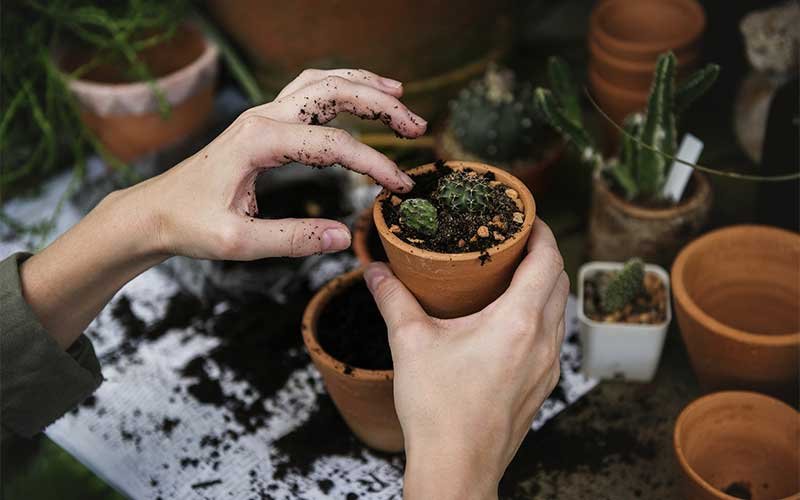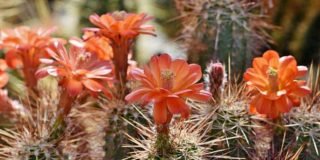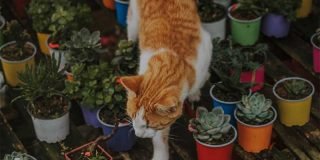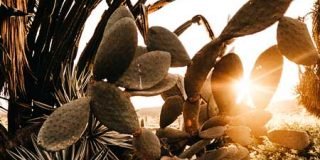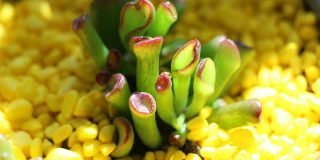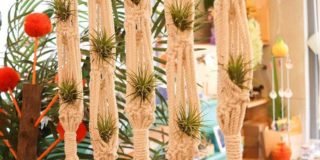Contents
Before you proceed, make sure to read this article about invasive succulent species. Hopefully, we will be able to help you make an informed decision and you will be able to avoid these invasive succulent species in your garden. In case you still go for them, be careful as they spread and grow fast.
What are Invasive Plants?
Invasive plants are plants that are intentionally or accidentally introduced by humans in places and areas that are outside their natural habit. These invasive plants can spread easily because they do not have a natural predator, so when they start spreading rapidly, it can affect the native species and can also cause negative consequences to the environment.
Invasive plants can affect the diversity of the local or native species found in the environment. Some of the consequences found as a result of this include the fact that they can affect water availability and they can also damage the quality of soil nutrients. When an invasive plant species invade a habitat, they also affect the conditions of the environment. They change the light conditions, solar radiation, temperature levels, and this can also affect the local fauna and flora in that specific habitat.
An invasive plant species can cause changes that can damage the native vegetation in the area, as well as the nutrient cycling, increase the frequency of wildfires, and affect the water availability and cause erosion of the soil. Invasive plant species can have devastating effects on wildlife.
What Makes a Plant Invasive?
A plant can be invasive when they are not commonly found to that specific ecosystem and as a result, they can cause harm to the surroundings. They can harm the environment, human health, and the local ecosystem. If a succulent grows, reproduces, and spreads quickly with the potential to cause harm, they are called “invasive”.
Invasive plant species do not mean they have to come from a different country, but can also be a factor in its characteristics as an invasive specimen. For example, one plant is native to Mexico but is considered to be an invasive species in California because they affect and compete with the native plants found in that area.

How Do Invasive Plants Spread?
Invasive plant species are usually spread caused by human activities, although some are unintentionally done. For example, when people travel from different places they can carry uninvited species with them. Ornamental plants can accidentally spread into the wild and become invasive, such as invasive succulents that are unknowingly sold in garden centers and the buyers do not have any knowledge that these plants can destroy the native plants in the area as well as the environment.
When you are planning to grow succulents at home, make sure to consult garden centers on what plants are native to your area. Avoid buying succulents that can easily grow and rapidly spread in your home especially if you are a first-time grower and you do not have any experience in growing succulents. They can get out of hand and you will not be able to control their excessive growth.
Here are some of the invasive succulent plants
Kalanchoes – The queen of all succulent invasive species. They produce asexually by dropping little plantlets from their leaves. This plant is also commonly known as Mother of Thousands. When this plant accidentally makes its way into your succulent collection, it is often there to stay, unless you do something to control their spread and growth.
This succulent plant is also known for showing up unannounced along with another succulent purchase. While these are easy to pull up, they usually end up growing in cracks and crevices in the garden. Sometimes, they also sprout beside spiny and thorny plants, so it can be quite a chore to hunt and eliminate them all. You can place this plant indoors because it is a good-looking plant and will not be able to spread unlike when they are planted outdoors.
Mother of Thousands – This plant is also known as the Alligator plant and Devil’s backbone. Its scientific name is Kalanchoe daigremontiana. This native succulent of Madagascar is easy to grow and propagate. Its leaves have numerous plantlets that can spread quickly if left alone in the garden. They can fall and grow anywhere.
This plant has narrow and pointed blue-green leaves that are capable of growing up to 16 inches long and half as wide. It also produces bell-shaped flowers that grow circular within a single stem. If you decide to grow this succulent, just make sure to watch out for the tiny plantlets found growing along the leaves’ edges, when they fall off, they will root once in contact with the ground where they are dropped.
Make sure to separate it from other pots or other succulent collection as the plantlets can easily take over and grow over containers that are adjacent to it. This is a monocarpic plant, which means it is a plant that dies after blooming flowers. When this occurs, small plantlets will replace it when it dies.
Mother of Millions – This plant is also known as Chandelier Plant. Its scientific name is Kalanchoe delagoensis. The Mother of Millions is a native succulent commonly found in Madagascar. This plant is a perennial succulent.
It can grow up to 3.3 feet tall and its leaves are thin and narrow and it is known to reproduce asexually. Small plantlets are found in the edges of their leaves. The plantlets can grow anywhere they land and its seeds are capable of surviving for years even when the plants are pulled out.
The Mother of Millions can thrive in harsh conditions and can live in different environments, so they are considered as weeds and invasive species in some parts of the world. This succulent is easy to care for and can multiply effortlessly if you choose to grow this plant. It can grow and spread quickly, so watch out for that!

Agave – This variety of succulent has different types of species that are potentially invasive because they produce offsets quickly. Most suckering species produce offsets at the base of the mother plant. Since a lot of agave species are large and spinier, they can be quite annoying if they spread in your garden and can also affect the other plants.
Agave is commonly found in hot and arid climates in the Americas. This succulent is xerophytic, which means it only needs a small amount of water to survive. Agave forms large rosettes of strong and fleshy leaves, they usually have spines that can be quite painful if bumped into accidentally.
1. Agave americana – This is known as the most aggressive species of Agave. They grow fast and can spread all over the garden; some can spread over a dozen feet from the mother plant, and quite difficult to deal with.
2. Agave angustifolia – This species can spread and travel quite a bit of distance. This plant has a lot of spines and can be difficult to handle and eradicate. You need to remove all its roots from the soil for you to effectively remove it from the area.
3. Agave sisalana – This species is difficult to contain, and can produce remote offsets. It is easier to handle than the other agave species, but you must watch out for its viscous terminal spine!
Carrion Flower – This plant is also known as the Zulu giant. Its scientific name is Stapelia gigantea. The Carrion Flower is a flowering succulent plant native to South Africa and Tanzania. It resembles a cactus but it is a member of the milkweed family.
Unlike other plants that butterflies and bees pollinate, flies pollinate this plant, so its flowers are foul scented and usually resemble the scent of rotting meat! The Carrion Flower easily grows and they can produce remarkable growth especially if grown in the garden. It can easily double or triple its size in a single year. It will need sun exposure and a well-draining soil like this. It thrives best in areas that have warm temperatures to grow fully and healthier.
Aloes – Aloes are quite popular with succulent growers because of their medicinal and beneficial properties for humans. If you choose to grow this plant, you have to be prepared because they can be invasive locally. They are capable of popping up in different areas, sometimes several feet from its mother plant. Aloes grow fast and spread quickly. You can use this container when growing Aloes.

1. Aloe greatheadii – Spotted aloes that can grow fast and spread in the yard.
2. Aloe greenii – This species can spread quite quickly. It is easy to care for, just give it a decent watering and it will take off. The Aloe greenii has razor-sharp teeth so it can be difficult to deal with. When you try to pull it out, it can also yank out other plants in the garden as its roots are quite huge which means it can get caught in the other plants within the area.
3. Aloe maculata – One of the three spotted aloes that can grow and spread fast and it can also affect other succulents near it.
Ice Plants – This type of succulent specimen is a member of the Aizoacea family. They are collectively called Ice Plants. When they are grown in the ground, they can grow quite fast and even spread quick. They are popular choices for using as a ground cover.
If you find this invasive species in your garden you can pull them out because they have weak roots and do not have any spines. This succulent is commonly chosen for ground covers because they have amazing colors. Get Ice Plant seeds here.
Euphorbia – Some species of Euphorbia can be invasive, like the Spurges. They can be quite invasive, especially if left alone in the garden. The Euphorbia xantii has thin stems and can produce blooms of a hundred white and pink flowers during winter which can easily spread and grow in the garden everywhere.
If there are new seedlings, you can easily pull them out. You have to watch out when handling this plant because the sap from Euphorbia is highly toxic and can cause skin irritation. Euphorbia lambii is a succulent that can multiply and grow in areas meters away from the mother plant.
Sedums and Senecios – Both of these species are commonly used as ground cover, and they can be invasive in your garden. The sedum produces offsets that can spread and end up everywhere. The good news is these are fairly easy to remove. The senecios resemble the appearance of Ice Plants. They are bluish and can be used as ornaments but you must be careful because they can grow all over the place quickly.
Pregnant Onion – Its scientific name is Ornithogalum longibracteatum. This plant looks like a giant green onion and produces flower stalks that can produce plenty of seeds. This plant produces plantlets along the surface of the plant’s body and can spread and grow everywhere.
They are easy to remove as they can be pulled out of the ground. However, you must watch out because they can affect other plants surrounding it. You may need to replant them once they’ve been pulled out from the ground. Although there are succulent species that have benefits to humans, they have an undesirable impact that can cause an increase in financial costs and alter entire ecosystems.
Humans unknowingly spread invasive succulents because they use these in a variety of ways, such as: ornamental or as decoration, as well as food for humans or fodder for livestock. Some succulents are used as hedging as protection for properties and also for its medicinal purposes, such as aloe vera. The aloe vera plant is a well-known succulent that is grown for its medicinal and beneficial properties to humans. It has been used for more than thousands of years because of this characteristic.

How to Stop Succulents From Spreading
1. Plant native succulents only. Make sure to remove any invasive plants in your garden. There are a lot of good native plant alternatives that you can plant in your garden and even as indoor ornaments. You must verify any succulents that you are buying and you can ask a local nursery staff to help you identify invasive succulent species.
2. Learn to identify invasive succulent species in your area. If you see any invasive species, make sure to report them to your local land manager or county extension agent. They can arrange a clean-up to remove any invasive succulent species in the area.
4. Avoid buying invasive succulent species from garden centers. You can also inform the person in charge that they are selling invasive species so they can do something about it.
5. Apply as a volunteer at your local wildlife area, local parks to help remove invasive plants. As a volunteer, you can help educate others about invasive species.

Best Removal Method for Invasive Species
1. Natural way – Organic way to get rid of the invasive plants, this is safe for your other plants in the garden. You can pull out the plants; make sure to remove the roots as well.
Organic method – You can use vinegar as a natural herbicide. Some gardeners use boiling water to kill invasive plant species. Sometimes the organic method doesn’t work, so do not get your hopes up. You can also get rid of invasive plants by naturally choking them; you can kill these plants by using tarps.
2. Chemical herbicides – Read the instructions on the product’s label before buying it. Some herbicides are created specifically for “woody” plants.
Glyphosate – A populate chemical herbicide, it is a non-selective type of herbicide. If you use it in your garden to get rid of invasive succulents, and it can also kill other plants in the area. Be very careful when using it. You can use the herbicide injection method rather than spraying it. You can control which plant will be affected by the herbicide and you will not be killing the other plants in the garden.
We can prevent invasive succulent species from spreading. If we allow these species to live in our ecosystem, they will outcompete and affect the native species in the area. Invasive succulents can affect the soil quality which can result in erosion and can also affect the quality of the water.
When the succulents become crowded, they can also affect other native species and also decrease carbon that plants need and also affect the habitat for native wildlife. The best way to stop invasive succulent species is to prevent them from occurring.
Do you know any other way to remove invasive succulent plants? Please let us know, we would like to hear your thoughts!

If you have any comments, suggestions, inquiries, or questions please do not hesitate to contact us. If you are just starting to grow succulents at home whether indoors or outdoors, please let us know how we can help you. We are looking forward to hearing from you!

